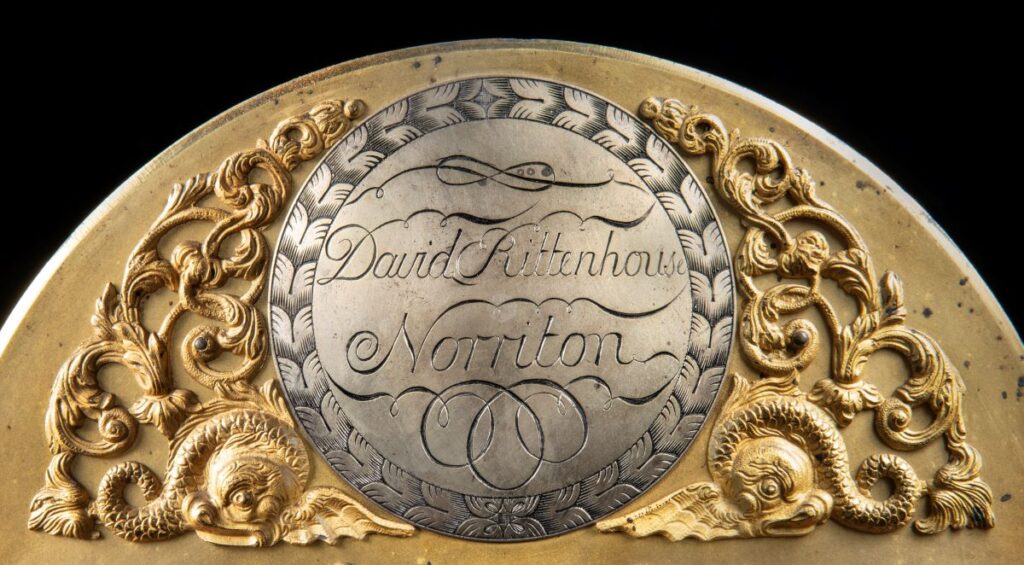
“Do we really need yet another book about David Rittenhouse?” This question leads the preface by this new book’s co-authors—a Winterthur emeritus curator and an avid collector of fine early American timekeepers. Despite at least ten previous books and countless articles about Rittenhouse, their answer is yes, claiming that a focus on his clockmaking is unprecedented and necessary.
This reviewer, a professional horologist for more than thirty years, has read most of those publications and heartily agrees. David Rittenhouse rose to local and international prominence as an astronomer, surveyor, scientist, and public servant. But as a self-taught craftsman, he earned his living and gained recognition early in life by producing floor-standing clocks, complex and innovative orrery clocks, and even more complicated machines that replicated the movements of celestial bodies.
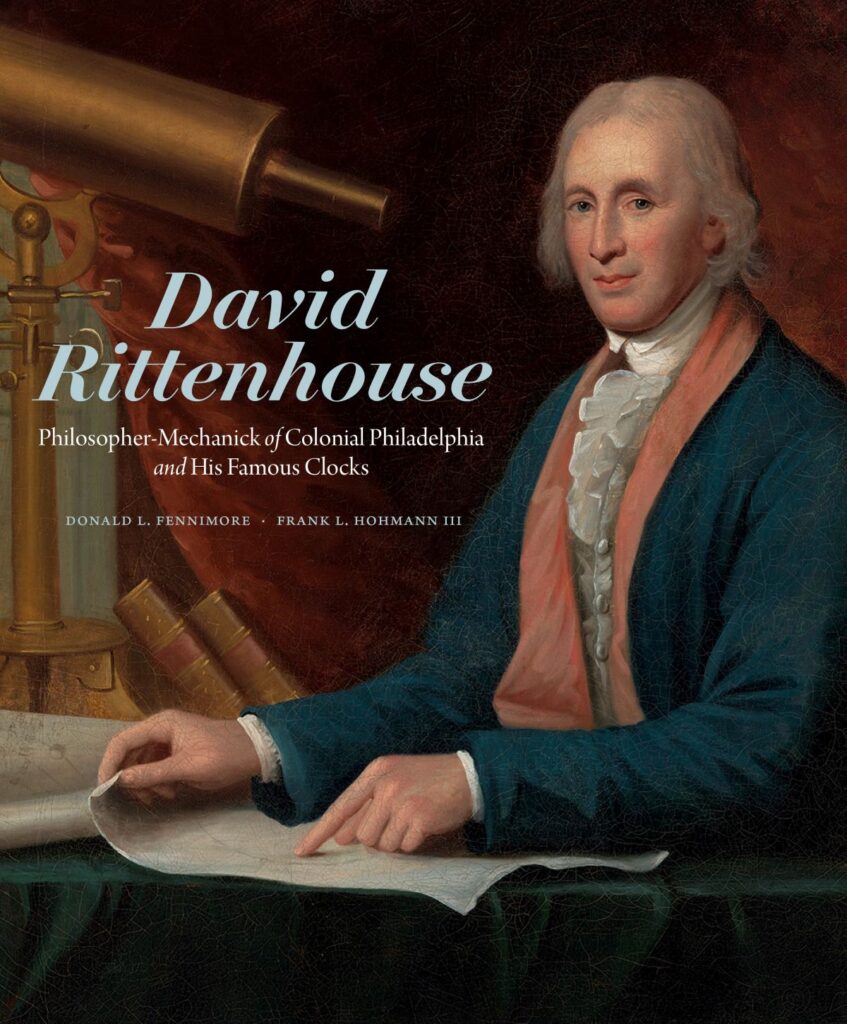
Readers need not fear that this is just a book about Rittenhouse machines. Not until page eighty-three do the authors turn from more general history and biography to chapters specifically about the clocks and instruments made not only by David Rittenhouse but also by his younger brother Benjamin. The “Catalogue” section—an examination of individual Rittenhouse-made mechanisms—comprises the final third of the volume.
The authors originally intended to present a much larger assemblage of Rittenhouse clocks, but soon realized that the famous name adorned the dials of many more clocks than the brothers made. From the time of the American centennial, “Rittenhouse” clocks proliferated, usually created by renaming Pennsylvania clocks from the period—easily done on the removable silvered dial bosses and plates on which signatures typically appear. The Catalogue highlights twenty clocks—ten by each brother—from sixty-seven the authors examined and believe to be genuine, determined in part by the distinctive engraving of their signatures.
The signature method was advanced at the 2016 “Clocks at Winterthur” symposium that this reviewer organized for the National Association of Watch and Clock Collectors. The late Jeffrey Lock, a specialist in early engraving and a restorer of Rittenhouse surveying instruments, spoke of his detailed analysis of Rittenhouse signatures. His assertions, controversial and unpopular with owners of questionable clocks, did not account for engraved dials that the authors attribute to professional local engravers employed by the Rittenhouses, including Henry Dawkins and John Norman. However, engraved signatures were judged spurious if they had improper or amateur scripts, spellings, or abbreviations. An archaic long s, looking like an f in older writings, also was judged evidence of fakery. An April 1932 exhibition at the Historical Society of Pennsylvania commemorated the two hundredth anniversary of David’s birth. Sixteen clocks were displayed: fifteen by David, one by Benjamin. Seven of the twenty clocks in the new book’s Catalogue were in that show, providing further evidence of their authenticity.
David Rittenhouse may best be known for his two large orreries and two preceding clocks with moving models of the solar system. All four can be admired in person. The large vertical orreries—intended for classroom instruction—are, respectively, at the University of Pennsylvania and at Princeton University, although the latter is incomplete. The two clocks are at Drexel University—a musical version—and at Pennsylvania Hospital. The larger machines originally were intended to be driven by clockworks rather than by hand-cranking, but Rittenhouse determined that to drive all the gears he would need movements the size of those in church towers.
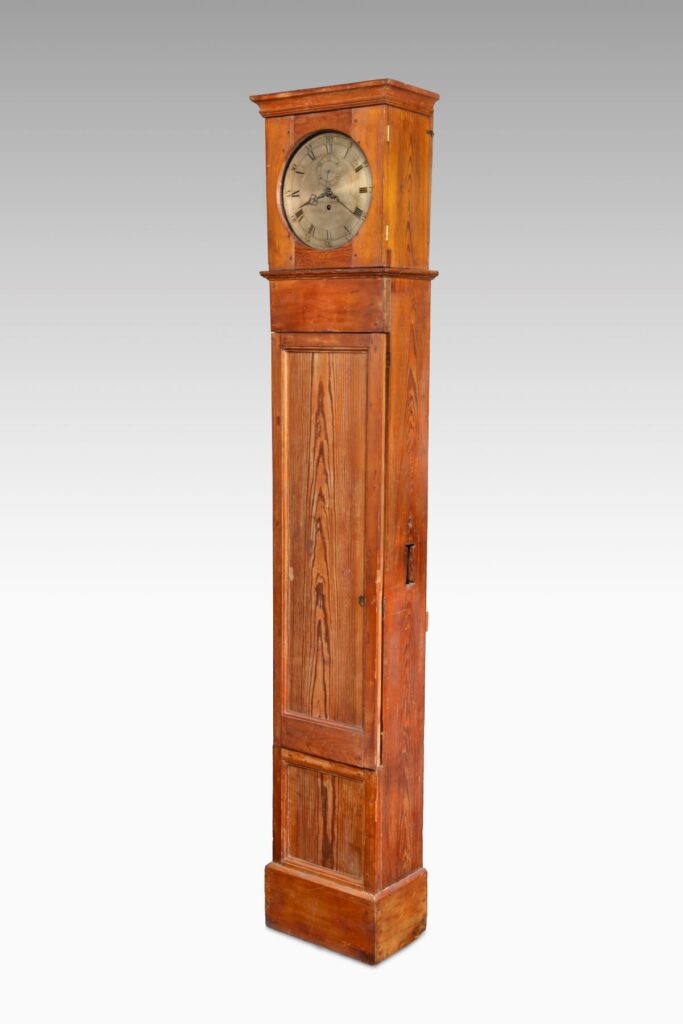
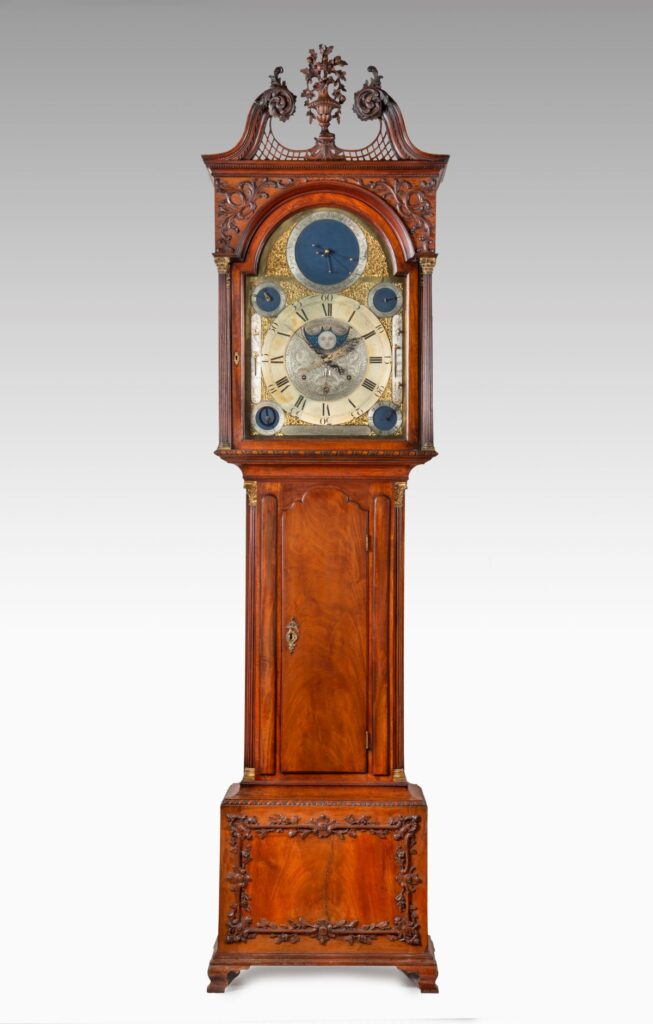
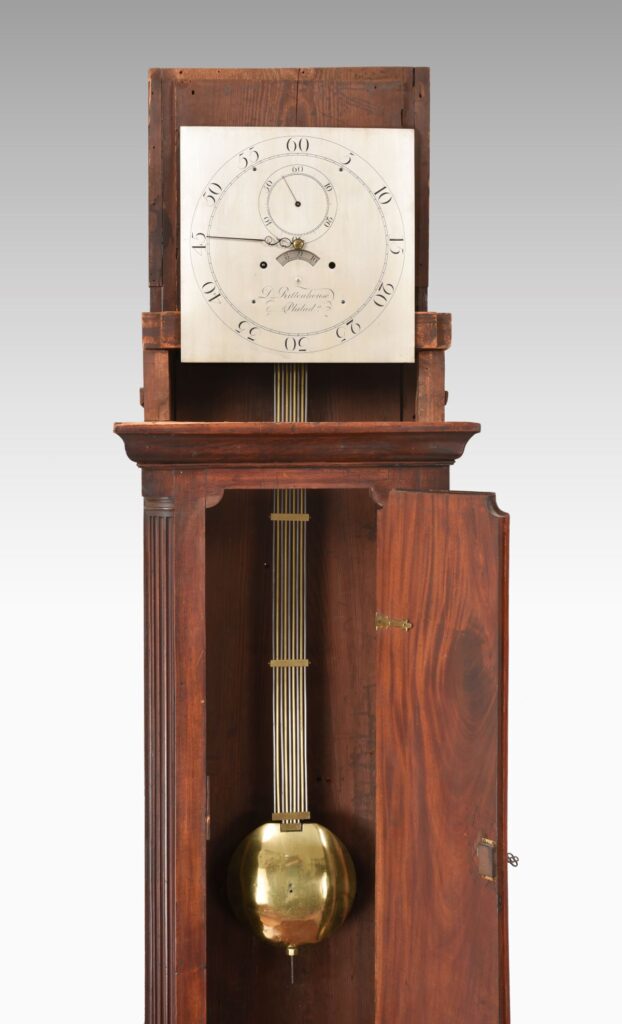
Both brothers also produced the surveying instruments needed as the population expanded westward. David used his instruments during arduous surveying of contentious state boundaries. He also made thermometers, barometers, theodolites, hygrometers, vernier compasses (which he invented), and a pair of spectacles for George Washington.
His astronomical regulator, built for observations of the 1769 Transit of Venus, was donated in 1810 to the American Philosophical Society. The authors note two rectangular holes in the sides of its plain pine case and claim that Rittenhouse cut those during a 1784 surveying expedition, when his temperature-compensating pendulum began banging the case’s interior walls. That seems highly unlikely, given the maker’s expertise and the very small pendulum swing generated by the deadbeat escapement. The unique pendulum was destroyed in 1907 when a cat-gut-weight cord broke.
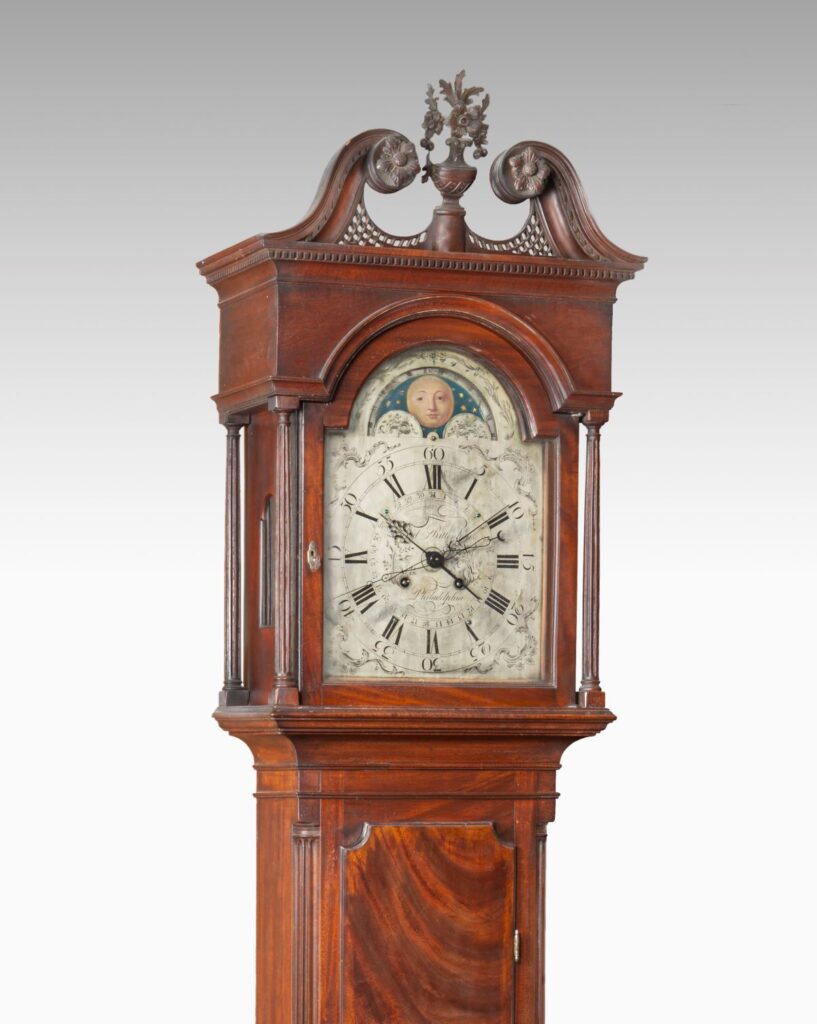
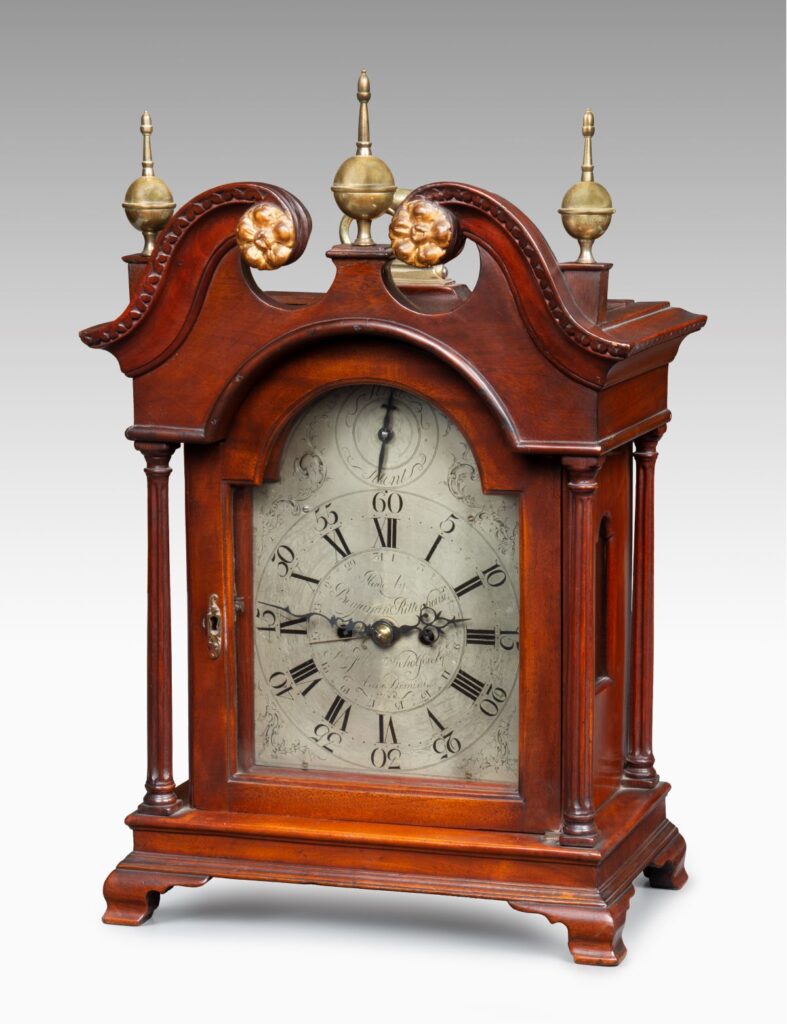
The Catalogue features two of Benjamin Rittenhouse’s table clocks dated to the decade after the Revolution. While the cases, dials, and back-plate engravings certainly are American, this reviewer is skeptical that Benjamin had the desire, time, or expertise to fabricate the conical grooved power-regulating fusees, their chains, the large cylindrical mainspring barrels, or the powerful steel mainsprings. These appear to be imported English components or entire movements that compare exactly to standard English-produced movements of the period. There is no evidence that he had the specialized costly equipment; if he had, he would have employed it for making more than two movements powered by springs, not by the descending weights driving all his other clocks.
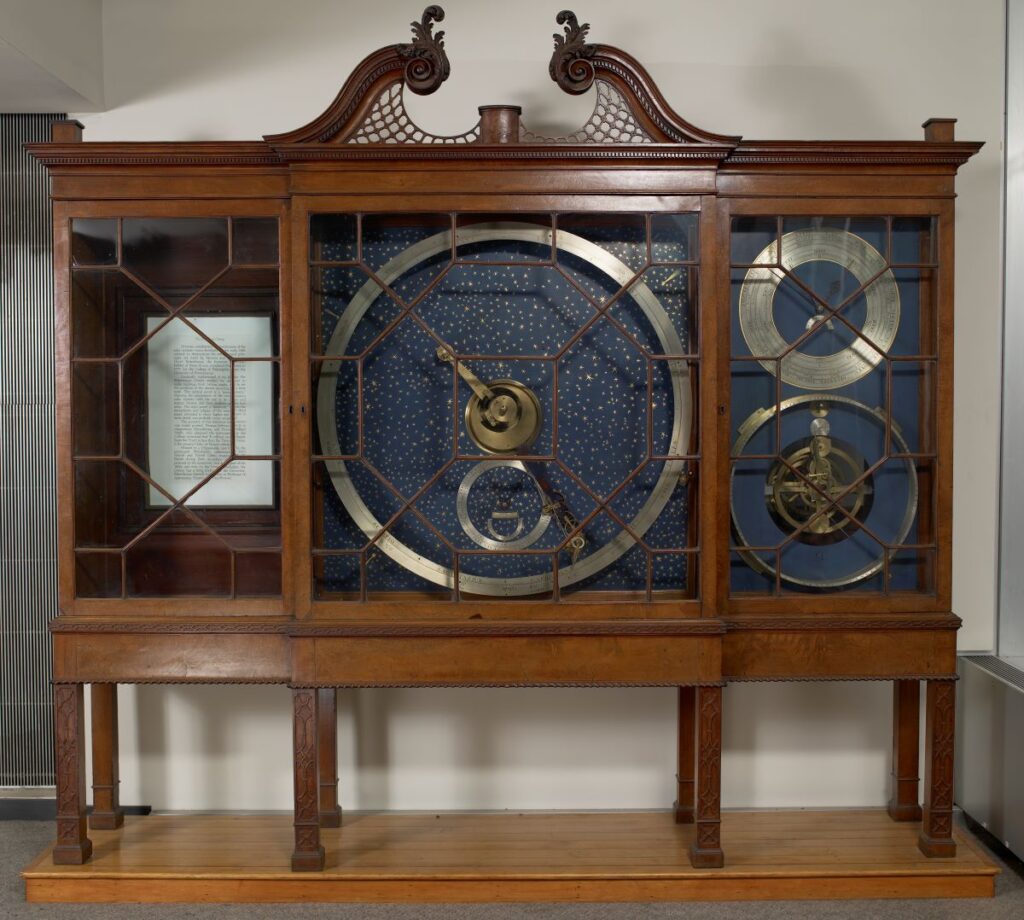
No criticism of Benjamin Rittenhouse, this acknowledges that American makers used imported English horology to satisfy consumer requests and offer less-expensive alternatives to complete clocks from London. At Winterthur, the movement of a similar table clock by Edward Duffield, a Philadelphia clockmaking contemporary, was stamped by London eighteenth-century clockmaker Thomas Best.
The many books and articles about David Rittenhouse have for two centuries confirmed his eminence as one of the most important Americans of the Enlightenment. Thomas Jefferson equated his greatness with that of Franklin and Washington. More tangible than published writings, his stately and innovative machines are equal testimony to the greatness ascribed by our third president. Thanks to the book’s authors, who previously gave us important books on colonial clockmakers Stretch and Claggett, the Rittenhouse story now is even more compelling and complete.
BOB FRISHMAN has been a professional horologist for more than thirty years. His biography of colonial Philadelphia clockmaker Edward Duffield will be published in 2024 by the American Philosophical Society.

